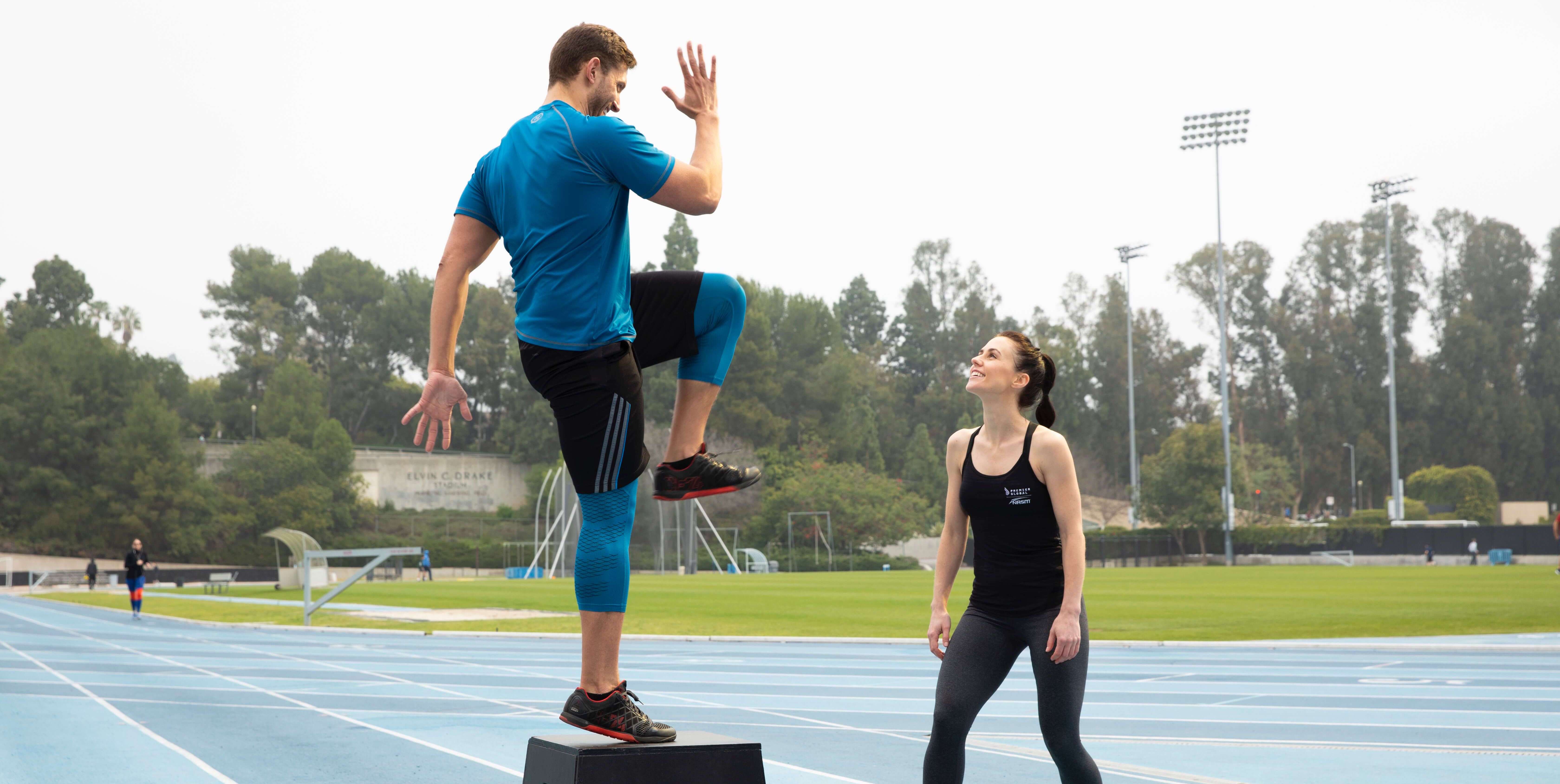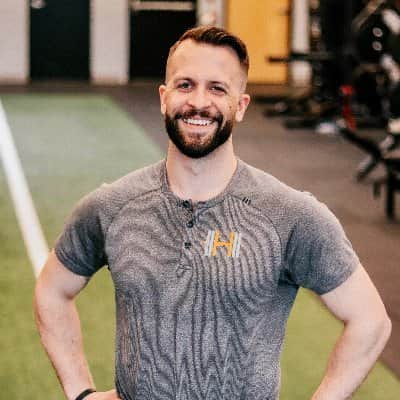WHY SHOULD ATHLETES TRUST THEIR PERSONAL TRAINER?
Working with an athlete to achieve on-field success can be one of the most intimidating and complicated tasks for a young trainer to master. There are so many training methods available that “analysis paralysis” can easily hinder a coach’s progress.
Working with personalities, e.g., athletes, parents, coaches, referees, etc., around sports, can be stressful and requires excellent communication skills. The hours can be long and taxing in several ways. Despite all of this, it can also be one of the most rewarding experiences for a strength and conditioning professional.
Athletes (and for young athletes, sometimes, Mom and Dad) tend to be outcome-oriented – meaning they want results, and they want them now. They’re also typically excellent at trusting their instincts. This can translate to false confidence in their ability, as well as the effectiveness of their past training experiences. In other words, if you are introducing novel training concepts that appear to be a step back in an athlete’s training, be prepared to defend why you are training that way. It may be helpful to provide information and educate your athlete about your training approach.
This will certainly also help show your athlete how much you care about their success. Making an effort to do a bit of research on their sport, injuries, or challenges within the sport will not only show your professionalism and care for their well-being but prepare you for the next similar athlete you encounter. Whether your efforts need to be directed to Mom and Dad, directly to your athlete, or to both, you will need to build rapport early and often. It is essential that you are trusted as the professional to make the best use of your athlete’s time, money, body, athletic success, and growth as a person. And that you deliver.
WHAT ARE THE ATHLETE’S NEEDS?
One of the most effective ways of building trust with an athlete is to master your system of thinking. Dr. Stuart McGill summed it up extremely well when he said,
“Survey the goals. Figure out what they need. Train the differences, and don’t get too crazy. And you will have a more satisfying life. I would say with less pain.”
Dr. Stuart McGill
Please keep it simple, build on their strengths, and bring up their weaknesses. Spend time early and often talking to your athletes about their goals, where they feel they underperform, and where they thrive. Ask them what motivates them! Then develop a plan of attack from these conversations and assessments. One of the simplest yet telling assessments I have utilized is having athletes stand on one leg while they share their past experiences and future goals with me. If they struggle to balance during this conversation, I immediately have a chip to work with.
For example, a D1 basketball prospect who has only ever focused on increasing her vertical power may laugh at your plan to divert training time to improve the stability of her feet, ankles, knees. You know, as the expert, she needs to build a reliable brake and suspension system to equal her 500-horsepower engine. You also understand that when you talked with her on day one, she could barely stand on one foot for more than 10 seconds. Not to mention, high-school female athletes are 1.6 times more likely to tear their ACL than males (Gornitzky, et. al, 2017).
Whether an athlete needs to build their engine or build their brakes is up to you to determine. See NASM’s list of performance assessment resources for some resources on tracking your assessments. Once you perform this needs analysis based on the athlete’s sport-specific requirements and individual strengths and weaknesses, you can compare the two and address any areas of deficiency.
WHAT’S THE PLAN TO HELP ATHLETES SUCCEED?
One of the most effective methods of improving both our engine and brakes (and pretty much every other system) is to enhance the electrical system. I get it; you’re not a mechanic, so why are we still talking about cars?
No matter the goal, the brain and its neuromuscular connection through our peripheral nervous system ultimately determine the body’s movement or ability to resist that movement. As a result, every athlete needs to be able to own certain positions through neuromuscular control (Sasaki et al., 2019). I’m talking about fundamentals, not a catastrophic accident a la Willis McGahee.
This is why the OPT™ model emphasizes eccentric and isometric control so often in its foundational phases. Once an athlete demonstrates the ability to have positional strength, we can layer on power. But having a big engine without the ability to control it can lead to issues down the road. Whether you are working with an 8-year-old girl just starting to play soccer or a 53-year-old retired Marine turned ultramarathon runner, the strength and speed of their neuromuscular pathways make all the difference.
Our ability as a coach to see and address these needs confidently ultimately leads to successes. It will also keep you working with athletes of all levels for a long time. Keep it simple. Master your strengths and bring up your weaknesses. But most importantly, be authentic in your craft.
If you’re interested in working with athletes, learn how the NASM Performance Enhancement Specialization (NASM-PES) can help you take clients to the next level.
REFERENCES
Clark, M. (2018). NASM essentials of personal fitness training. Burlington, MA: Jones & Bartlett Learning.
Gornitzky, A. L., Lott, A., Yellin, J. L., Fabricant, P. D., & Ganley, T. J. (2017). Sport-Specific Yearly Risk and Incidence of Anterior Cruciate Ligament Tears in High School Athletes: A Systematic Review and Meta-Analysis. Section on Orthopaedics. doi: 10.1542/peds.140.1_meetingabstract.109
Robertson, Mike, host. “Dr. Stuart McGill on Building the Athletic Spine.” The Physical Preparation Podcast, iTunes, 5 July 2019. https://robertsontrainingsystems.com/blog/stuart-mcgill-athletic-spine-podcast/
Sasaki, S., Tsuda, E., Yamamoto, Y., Maeda, S., Kimura, Y., Fujita, Y., & Ishibashi, Y. (2019). Core-Muscle Training and Neuromuscular Control of the Lower Limb and Trunk. Journal of Athletic Training, 54(9), 959–969. doi: 10.4085/1062-6050-113-17

















